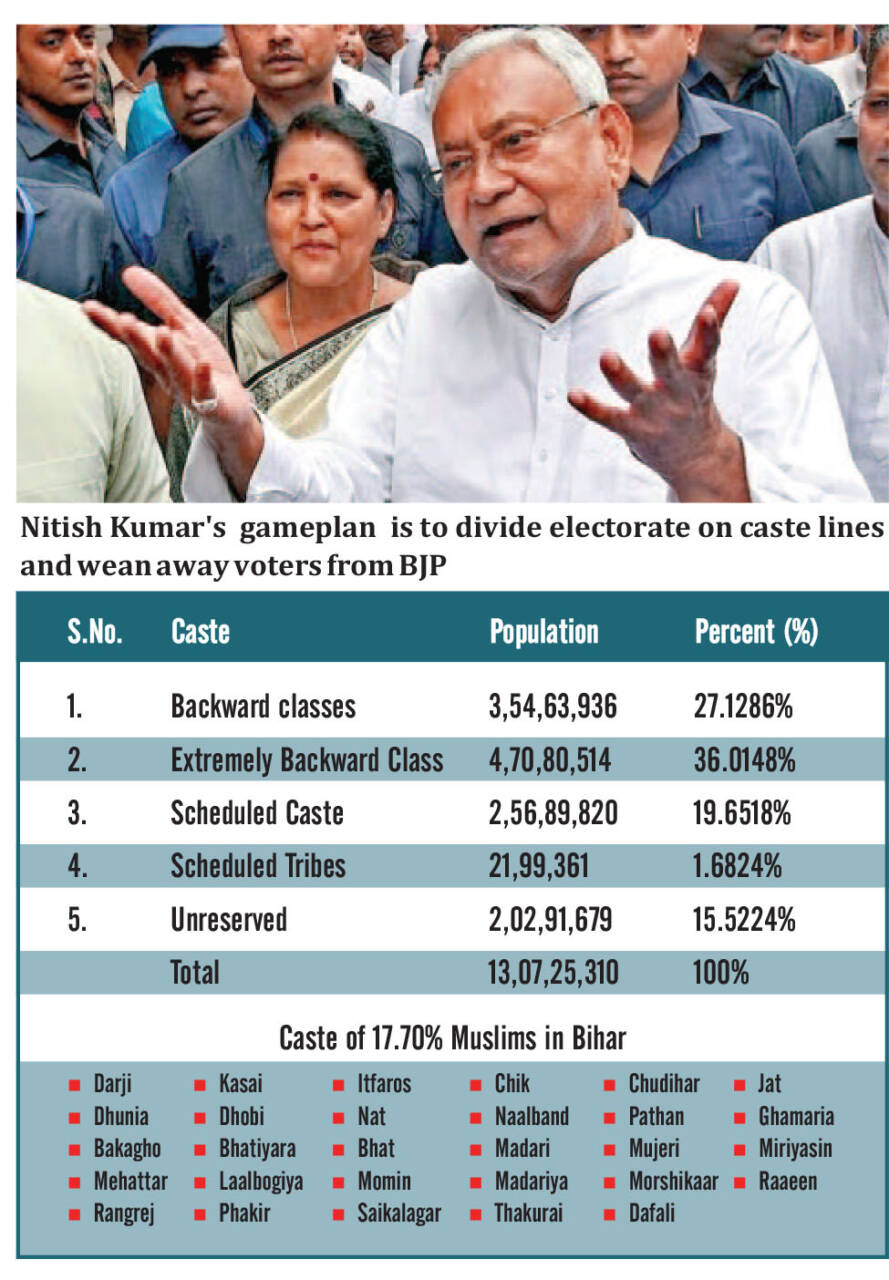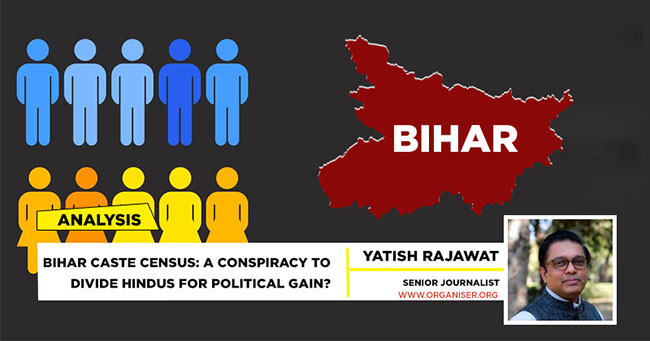The Bihar Government’s survey to identify the caste of its citizens opens up a pandora’s box that will create a social divide and unrest that will reverberate long after Nitish Kumar is gone. The caste survey weaponises data by the State to create caste-based fissures in Bihar again. While the party says that it is for social justice, everyone knows that it is a weapon to be used for political battle in the coming elections.
The rule book is very simple for Nitish Kumar and his alliance partner. They will cite the survey and keep insisting that the backward castes have been denied their share in welfare schemes and Government jobs. And this has happened because the Central Government did not do a caste-based survey to understand the extent of the problem. This would ostensibly divide the core voter base of the Bharatiya Janata Party (BJP) that has benefited from its welfare schemes. This division is the objective of the social justice narrative which is as false as it has ever been. Politicians have been talking about social justice since they became netas. Social justice and equity is the promise that keeps the votes coming. Hence, it is important to keep inequity alive as once that happens there are no more votes.
Creating Resentment Against Centre
Now, to drive the message strongly, Nitish Kumar will create a wave of anger among those who have been denied their rights by the Central Government. However, as a ruling party, it will be difficult for him to create this wave as the common man only sees him as the ruler. To turn the election battle into a fight against injustice brings the force of righteousness back into the fold of dynastic politicians, who have long benefited from manipulating the public.
When dyed-in-the-blue politicians along with dynasts go to the common man with the appeal that they have been denied their rightful claim, will the voter see them differently? Just because they have managed to highlight that the population of backward castes has grown more than it was assumed. Will the common voter accept the credibility of an alliance because now it has caste data to explain the economic divisions? This is not an easy narrative to establish for the common man. The only way for it to be established is through street violence. This means that this election, if it has to be fought along caste lines at least in Bihar, will be bloody and violent.

Caste-based groups will be activated across the State or across the nation to demand their rights. Though the INDIA coalition has very little time to make this possible across the country, it will try to do it in constituencies where there is backward caste domination,
Few Beneficiaries
The rise of the backward castes into the political hierarchy, post-Mandal, and successive welfare schemes targeted at them have created economic prosperity among the select few. While the State claims that it also has economic data, it has not released any such data at the press conference. Even the survey data was released in such a manner that it cannot be used by researchers. The app, which is developed for collecting the caste data, is basically a one-way data collection application. It does not give access to a common citizen to see the data in his district or area. This means that rival political parties will not have access to the full database. The Bihar Government has reportedly spent Rs 500 crores on the survey.
To make the caste data an effective tool for electioneering, the Bihar Government will also announce a series of reservations to reflect the new data of the survey. The current data shows that OBC make up more than 27 per cent of the population, while the extremely backward castes (EBCs) make up 36 per cent of the population. Hence combined, they make up 63 per cent of the population, while the reservation for them is just 30 per cent. EBCS is given an 18 per cent reservation, while OBCs have a 12 per cent reservation quota. Now if this reservation has to meet the new survey data, it would have to more than double to 63 per cent, even breaching the norms for the overall reservation quota set up by the Supreme Court.
The next important step for Nitish Kumar would be to start announcing new quotas for the EBCs and OBCs in different jobs and welfare schemes given out by the State Government. These announcements will not be easily met but they will become promises with which he will go to the electorate promising them that if the alliance comes to power at the Central Government level they will change the overall limit restricting the expansion of these quotas.
Promising higher reservation quotas is always seen as an important election plank and the Government has been made and lost on this issue. This would lead every member of the INDIA coalition to make similar promises in their own State first promising a State-level caste survey and then realignment of the reservation on the higher side for the EBCs and OBCs in the State. There will soon be a Bihar formula for reservations and this will be announced before January 2024, the model will become the operational model for reservation-based promises of the INDIA alliance.
The objective would be to divide the Hindu vote and take the OBC and EBC voters away from the BJP. These voters have been crucial for the BJP as the Prime Minister has presented the Centre as a Government for the poor.
Now, several new dimensions will be added to the election in 2024, at least in Bihar. This will be done to alter the mathematics for each of the 40 seats in Bihar. Maybe the candidates in some of the seats will be aligned with the new caste data for the constituency. But the most important change will be the election plank in each of these constituencies. If it is left to Nitish Kumar then the election will be fought on caste lines, a throwback to the bloody caste wars of the past in the State. If it is left to the INDIA coalition then the election for the next Parliament in 2024 will be fought on caste lines. The objective is to divide the electorate sharply along caste lines, and divide the Hindus as per the Britishers’ policy of divide and rule.




















Comments